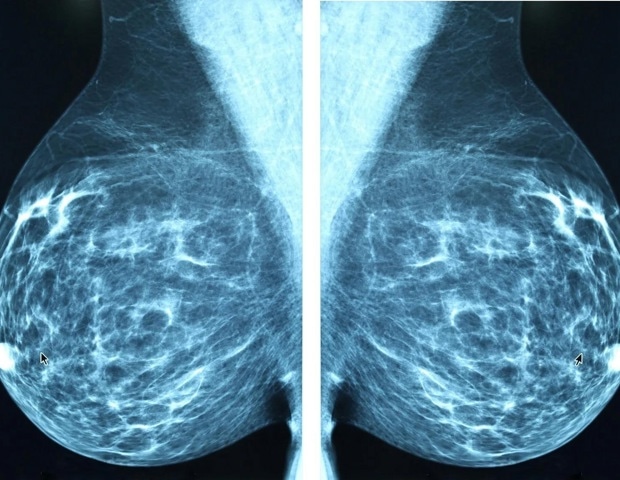The American College of Cardiology (ACC) and OpenEvidence are entering a strategic partnership to accelerate the translation of cardiovascular clinical guidance and research into clinical implementation at the point of care. By…
Author: admin
-
Dengue outbreak claims 21 lives in Pakistan’s southern Sindh province-Xinhua
A health worker sprays disinfectants to fight against dengue fever in southern Pakistan’s Hyderabad on Nov. 6, 2025. (Str/Xinhua) ISLAMABAD, Nov. 8 (Xinhua) — At least 21 people have died from dengue fever in Pakistan’s southern Sindh province so…
Continue Reading
-

Review: Hildegard von Bingen was a saint, an abbess, a mystic, a pioneering composer and is now an opera
Opera has housed a long and curious fetish for the convent. Around a century ago, composers couldn’t get enough of lustful, visionary nuns. Although relatively tame next to what was to follow, Puccini’s 1918 “Suor Angelica” revealed a…
Continue Reading
-
Mistrial declared for MIT-educated brothers accused of $25 million cryptocurrency heist – Reuters
- Mistrial declared for MIT-educated brothers accused of $25 million cryptocurrency heist Reuters
- ‘Crypto-skeptic’ lawyer on the ‘MEV brothers’ trial: Washington still doesn’t get it dlnews.com
- Ethereum Updates: Court’s Interpretation of “Genuine” Blockchain Verification May Influence the Future of Cryptocurrency Bitget
- Judge Declares Mistrial in MIT Grad Brothers Fraud Case Bloomberg.com
- Jury in MEV bot trial struggles to reach verdict as weekend approaches TradingView
Continue Reading
-

Evaluating Valuation as Sector Pressures and Company Setbacks Challenge Investor Confidence
C3.ai (AI) is navigating a challenging environment as missed sales targets, uncertainty surrounding CEO succession, and legal challenges continue to accumulate. At the same time, investors are rethinking the entire AI sector, fueling a steeper drop in C3.ai shares.
See our latest analysis for C3.ai.
This sharp downturn for C3.ai follows a streak of sector headwinds and company-specific missteps, with the 1-year total shareholder return sitting at -43.7% and the year-to-date share price return at -55.2%. While C3.ai’s momentum has faded lately, investors are watching to see if strategic shifts and potential stabilization at the leadership level can eventually support a turnaround. Investors are also considering whether renewed risk perceptions will keep sentiment cautious.
With so much happening in the tech and AI space, it is an ideal moment to explore new opportunities. See the full list of innovative companies with our See the full list for free..
Given such sustained declines and a clouded business outlook, the crucial question remains: is C3.ai’s current valuation reflecting all its risks, or does the market’s pessimism open a genuine buying opportunity for bold investors?
With C3.ai’s fair value assessed at $14.67 while the last close was $15.52, the most widely-followed narrative suggests the stock may be pricing in optimism beyond fundamentals. This prompts a closer look at what is fueling the current market stance versus where analysts set their expectations.
The rapid expansion of AI deployments across manufacturing, chemicals, defense, and government clients, demonstrated by fresh enterprise-wide commitments from Nucor, Qemetica, HII, and U.S. Army projects, signals accelerating enterprise adoption of advanced AI platforms, which is expected to drive strong, multi-year revenue growth as adoption moves from pilots to broad production rollouts.
Read the complete narrative.
Analysts are betting on C3.ai’s ability to shift from pilot programs to widespread adoption. But what hidden metrics are powering this future outlook? Unpack the high-stakes assumptions, spanning projected expansion and ambitious margin improvements, by reading the narrative in full.
Result: Fair Value of $14.67 (OVERVALUED)
Have a read of the narrative in full and understand what’s behind the forecasts.
However, persistent operating losses and unpredictable revenue growth could quickly challenge the optimistic outlook. This may keep investors cautious about near-term performance.
Find out about the key risks to this C3.ai narrative.
Continue Reading
-

Water resource management critical: IMF
Govt seeks Rs3.3tr for mega dams as country faces scarcity, flooding challenges and India’s water aggression
Mahir Binici, IMF Resident Representative in Islamabad. Photo (file)
…Continue Reading
-

New NIH grants fuel research in oral cancer treatment and pain relief
Researchers at the School of Dentistry at UT Health San Antonio, the academic health center of The University of Texas at San Antonio, have been awarded three multi-year grants totaling $6 million from the National Institutes of…
Continue Reading
-

New radioimmunotherapy approach shows potential to cure HER2-positive breast cancer
A new radioimmunotherapy approach has the potential to cure human epidermal growth factor receptor 2 (HER2)-positive breast cancer, according to new research published in the November issue of The Journal of Nuclear Medicine. The…
Continue Reading
-

Student-Built Satellite to Explore Solar Wind and Space Weather in Upcoming NASA Mission
A student-designed CubeSat, built by undergraduates from three US universities, is preparing for launch later this month. The small spacecraft will help scientists understand how the Sun’s activity affects space weather and Earth’s upper…
Continue Reading
-

Maternity care client and provider experiences at health facilities in
Background
High-quality health services are essential for achieving universal health coverage and fulfilling the third Sustainable Development Goal (SDG 3).1,2 The Lancet Global Health Commission on High Quality Health Systems underscores that…
Continue Reading
